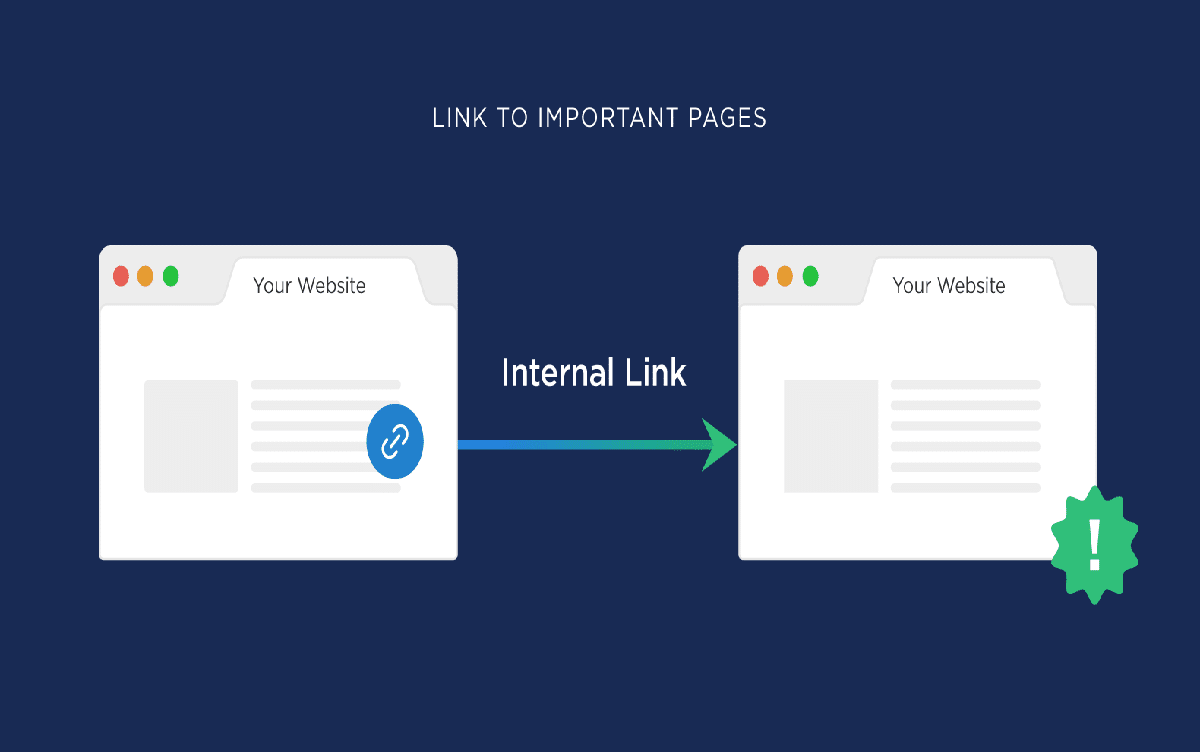Most people think that internal linking is hard to handle or it may be complicated. On the one hand, it is such a simple thing, and everyone must do it. On the other hand, the best practices, process, and theory of internal linking get remarkably complex. It is both simple and advances. Internal linking is a strategic way of SEO power technique, and it is essential for content marketing.
Moreover, how can we judge content success? In the long run, effective optimization can impact your performance. It is essential to invest much time in content optimization.
You must give the answers to your audience questions and create precious content. In this way, you can attract a new audience. Visitors, who found answers to their questions in your content, then they become the regular and loyal audience. They can be your brand ambassadors. A high-quality and well-optimized content improves the chances of ranking high in search results.
Carry out a keyword research
We all know this factor that content is king, and the keywords play a crucial role. Finding the right keywords helps you dominate the search results, and it is ideal to satisfy your target audience. So, you need to focus on some points while choosing the target keywords.
- The volume of the searches for a specific keyword in a given timeframe since using the wrong keyword lead to a waste of budget and time. Moreover, these keywords are used for internal linking too.
- To create catchy content, research resources.
- It is essential to understand the searcher’s intent behind the keywords that you need to use.
- The use of the long-tail keyword is useful for optimization. These keywords contain low search volume and offer a high-possibility to rank on the SERPs. People use long phrases or keywords to search for some specific information.
Stuffing your content with your keywords can make it less attractive for the readers. However, it hurts your ranking on the search engine. Google is smarter, and it needs you to write content that readers will love. So, using keywords in every other sentence is not suitable to get a high-ranking on the search engine.
Identify the right format and determine the search intent.
It is the term that is used to explain the objective of an online search. Moreover, Google ranks the pages that best fit the search term. Besides, it is behind a particular search query. It is famous for the name of the keyword intent. For SEO, understanding search intent is highly essential for optimization. The major types of search intents are here.
- To go somewhere
If someone wants to access a particular site or page, then he will use some branded keywords. For instance, people use “Facebook” or “FB” instead of typing Facebook.com.
- To know something
Users searches to get the answer to his question, and he uses the words, why, where, what, and how. Some other interrogatives are used as well.
- To do something
A person needs to complete the conversion or an action. It can be a store visit, lead generation form submission, phone call, or an email sign-up. It can be hard to measure in the analytics.
Generate a well-optimized Meta title
We cannot ignore this factor because it is vital for high ranking on google search. The Meta title and description contains keywords related to the content of the web page. It assists the search engine to understand what the page is about as well as indexes your web page as per the relevant keyword phrases and keywords.
A well-optimized Meta title gives a user instant insight into the web page content and how it may be relevant to the query. It can be the primary information with the Meta description and potential visitors use this content to decide which search result to click. Therefore, for SEO, it is important to use meaningful or high-quality titles when he optimizes his web pages for internal linking. Moreover, an SEO must not ignore the best practices to adopt as the title must not be less than 70 characters. In this way, the full title will fit on the result pages.
Generate catchy H1
If you want to include more creativity in your content, there is a little more room in the H1 tag. In your H1 tag, using keywords will help search engines to understand what your pages are about. These headings play a key role in managing easy SEO, and it makes it easy for the users to navigate through the page. An SEO must focus on the best practices such as
- Create only one H1 heading per page
- Generate heading in a hierarchical manner
- The style you H1 tag in a different way that makes it unique from other headings
- Do not create very long headings
- Do not forget using keywords in the headings
- The H1 heading must be similar or slightly different than the page title
- It must match the search intent.
- All these practices are excellent to improve your content optimization on the search engine.
Meta Description optimization
It is an attribute within your Meta tags, and it is helpful in describing your page. The snippet of text appears in the search engine results under your headlines through the search engine sometimes pulls a snippet of text from the major body. Get the Meta description on any web page by clicking it right on the page. Select the view page source or view source. Focus on the best practices as well such as
- Add call to action and target and emotion, if it is relevant.
- Generate a description of every web-page for internal linking and do not forget to describe the particular page.
- Add relevant keywords to it.
- It must contain 140 to 160 characters or about one to two sentences.
If you focus on these practices, it will be useful to create SEO-friendly content.
Conclusion
Many other ways can help you to create SEO-friendly content by improving internal linking other than the methods mentioned above. All these are the most effective ways and help you to create well-optimized content. Google likes ling content, but long articles can scare the reader. Always keep your content informative and give the answer to your readers, then it will attract more audience.



What Is Link Bait? A Complete Guide with Examples and Ideas
AI Search is Changing SEO: How to Optimize for AI Answers